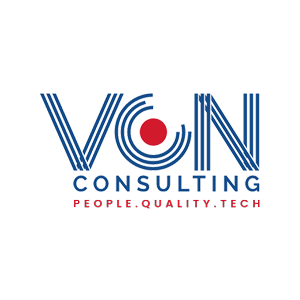Researchers from MIT and Intel have created AI automated coding. Its name? MISIM, an algorithm that can create algorithms. What does that mean for software developers?
For most of us, writing code is like learning a foreign language. But no more! A team of researchers from MIT and Intel are looking to change all that by building AI automated coding.
The new technology is named MISIM (Machine Inferred code Similarity). MISIM studies snippets of code to understand what a piece of software intends to do. It uses a pre-existing catalogue of codes and it can understand the intent behind a new code.
Will this actually help software developers? The Intel-MIT team says yes. MISIM will help developers working on software by suggesting other ways to “attack” a program. MISIM will also aid them in offering corrections and options that will make the code more efficient.
The principle behind MISIM is not new. Technologies that try to determine whether a piece of code is similar to another one already exist. They are used by developers, but they focus on how code is written and not on what it intends to do. MISIM can act like a recommendation system. It suggests different ways to perform the same computation – that are faster and more efficient.
Software development becomes more and more complex. Technologies such as MISIM could have a significant impact on productivity. This was the opinion of Justin Gottschlich, the lead for Intel’s machine programming research team.
More details about the MISIM algorithm here: https://www.zdnet.com/article/software-developers-how-plans-to-automate-coding-could-mean-big-changes-ahead/
You might also find interesting: https://vontech.online/study-tech-trends-in-pandemic-times-1-in-4-people-learned-to-code-during-lockdown/
Although it was created 30 years ago, Python seems to be holding firm ground in the top programming languages of 2020, according to a study cited by www.developer-tech.com.
Ideally suited for artificial intelligence and web development, still considered easy to learn and taught in many universities worldwide, Python ranked 100 points in a survey meant to identify not only programming languages preferences, but also programmers’ unique needs and interests.

Java takes second place
Newer – and younger – than Python, Java was created 25 years ago and is known for its versatility with the language powering mobile, desktop, and web applications/games.
It surges in programmers’ preferences and usage ahead of Ruby, R, Arduino – to name but a few – and it is still a popular option for the world’s most used mobile operating system, Android, despite intense lobby for Java to be replaced by Kotlin.
Java ranked in at 95,3 points of the scorecard.
Just 1 point behind Java – C
C is the oldest of the top three languages ranking in this survey. C was created 48 years ago, in 1972, and continues to be the language primarily used for system development work, such as drivers and operating systems, but also applications that require large amounts of calculations.
C and C++ ranked in the study afore mentioned at 94,6 points and 87 points respectively.
The R-ise of R
Universities and research institutes embrace Python and R for their statistical analyses. And now more than ever, lots of statistics and data mining need to be done to find a vaccine for the Covid-19 virus. As a consequence, statistical programming languages that are easy to learn and use have gained noticeable popularity now.
A statistical language, R saw an interesting increase in another ranking, comprised in the TIOBE index, just behind Visual Basic, with the top 5 being held by C, Java, Python, C++, C#.
Article brought to you by VON Consulting Tech Division. People. Quality. Tech.
VON Consulting Tech Division is a start-up operating also in Düsseldorf, Germany, which provides hardware design and verification services, IT support and software development for customers in different industries, mainly in IT, telecom, and networking and semiconductors industries. See more on https://vontech.online.
Doors shut on many plans during the Covid-19 pandemic. Plans turned to day-by-day approaches, particularly where daily livelihood was concerned and job stability had to navigate mass layoffs and furloughs in some fields.
Yet, despite this rather asperse scenery, the following phenomenon happened: employees turned to learning new skills to keep their leverage on the working market, as well as to garner a new feeling of personal development. Case in point: technology proficiency.
The golden top 3 podium: Python, Java and C++
According to a study that collected data in August 2020 from more than 1,000 people in the United States, which is cited by www.developer-tech.com, around 1 in 4 people spent time learning coding languages during the lockdown.
The most commonly learned programming language were Python, followed by Java and C++.

Millennials, most engaged with new tech trends
70% of the study respondents said their technology skills moderately or greatly improved since the Covid-19 breakout. Breaking it down by generation groups, millennials, at nearly 3 out of 4 respondents, were the most likely to have improved their tech skills with Generation X not far behind.
Baby boomers were considerably less likely to report any tech improvement; still, over half said they were more skilled now than they were before the Covid-19 pandemic.

Biggest motivation to learn code: career development
The greatest motivations for people setting out to improve their skills were career development (55%), personal development (46%), and improving job search prospects (33%).
Online e-zines, online channels, and mostly freely available content, was the top source of training material for most (66%) people boosting their skills, with 1 in 3 turned to paid resources.
On average, people spent 7,2 hours per week improving their tech skills, the most time learning coding and programming languages, while improving telecommunication proficiency required the least study time.

One other interesting aspect to consider: people who had taken advantage of employee-provided training opportunities were much more inclined to pursue development on their own or through paid resources.
Over one-third of respondents (37%) whose employers didn’t offer technology education opportunities reported wishing their employer would do so.
Overall, close to 1 in 2 respondents believe their new or improved tech skills will be very or extremely beneficial to their career.
Article brought to you by VON Consulting Tech Division. People. Quality. Tech.
VON Consulting Tech Division is a start-up from San Diego, CA, which provides hardware design and verification services, IT support and software development for customers in different industries, mainly in IT, telecom, and networking and semiconductors industries. See more on https://vontech.online.
Graph databases store information as nodes and data specifying their relationships with other nodes. They are proven architectures for storing data with complex relationships.
Graph database usage has grown during the past decade, despite companies considering other NoSQL and big data technologies.
The global graph database market was estimated at $651 million in 2018 and is forecasted to grow to $3.73 billion by 2026.
Competitors remain in the range of other big data management technologies, including Hadoop and Spark. And competition grew in popularity, skill adoption, and production use cases more than graph databases.
Graph databases and query languages
Developers think in objects and use hierarchical data representations in XML and JSON regularly.
For graph databases, although it may be relatively easy to comprehend the modeling of nodes and relationships used, querying them requires learning new practices and skills.
Developers can query Neo4j graph databases using Resource Description Framework (RDF) and Gremlin, but 90% prefer to use Cypher.
The query is elegant and efficient but has a learning curve for those used to writing SQL queries. Here’s one of the first challenges for organizations moving toward graph databases: SQL is a pervasive skill set, and Cypher and other graph query languages are a new skill to learn.
Graph databases can be used in flexible hierarchy design
Product catalogs, content management systems, project management applications, ERPs and CRMs all use hierarchies to categorize and tag information. Graph databases enable arbitrary hierarchies and developers to create different views of the hierarchy for different needs.
To take advantage of flexible hierarchies, it helps to design applications from the ground up with a graph database. The entire application is then designed based on querying the graph and leveraging the nodes, relationships, labels, and properties of the graph.
Graph databases and cloud deployment – reduced operational complexity
Deploying data management solutions into a data center must consider infrastructure and operations, security requirements, review performance considerations to size up servers, storage, and networks, as well as replicated systems for redundancy and disaster recovery.
Organizations experimenting with graph databases now have several cloud options. Engineers can deploy Neo4j to GCP, AWS, Azure, or leverage Neo4j’s Aura, a database as a service.
The public cloud vendors have graph database capabilities, including AWS Neptune, the Gremlin API in Azure’s CosmoDB, the open source JanusGraph on GCP, or the graph features in Oracle’s Cloud Database Services.
Year over year it’s interesting to study the evolution of in-demand skills in the software industry and this year for sure makes for an interesting time frame to study.
According to an article published by www.developer-tech.com, which cites a study made by career website Hired, the most notable surge in 2020 – where demand for software engineers in the US is concerned – is for AR/VR talent – with a whopping 1400% increase in comparison to 2019.
The explanation is very simple: as per IDC predictions, the AR/VR market and subsequent need for skilled software engineers was enjoying about 60% of the total spending on software solutions in 2018. Within a 3 year margin, by the end of 2021, it is expected to hit 85%, with retail, transportation, manufacturing and public sectors needing services from these software engineers on the top of the chart.
AR/VR and why it’s so in demand in the United States
On a geographical basis, North America is found to be the region that invested heavily in the AR/VR market in the past 12 months and is forecast to witness the fastest growth in the next 5 years. Moreover, salaries for AR/VR software engineers jobs range from $135k – $150k in major US tech hubs. Monetary incentives aside, developers are also looking to get started toying with the emerging technology, with 46% of software engineers ranking AR/VR as one of the top 3 technologies they’d like to learn in 2020.
Gaming and computer vision engineers come in 2nd and 3rd
After VR/AR, the second biggest growth of in-demand talent was seen for ‘gaming engineers’ and ‘computer vision engineer’ roles – both witnessing 146% growths over 2019.
Demand for ‘search engineers’ increased 137%, whereas for ‘machine learning engineers’ increased 89%. Blockchain talent is still in demand, shy off 2019, with a 9% increase.
Most in demand programming languages
As per the study, some of the most in-demand programming languages are Go, Scala, Ruby, TypeScript, Kotlin, Objective C, JavaScript, Swift, PHP, Java, HTML, and then Python.
Some of the less in-demand languages are, unsurprisingly, some of developers’ favourites. Python, JavaScript, and Java are developers’ favourite languages but are behind several other languages in demand – including three of developers’ least favourites (Ruby, PHP, and Objective-C).
Developers’ satisfaction increases productivity and product deployment. It’s all-official and on the record, according to a study cited by www.developer-tech.com. So if you’re a company operating in software providence services, you might find the following study useful, not only for personnel recruiting, but also for your developer personnel satisfaction and workflow efficiency.
There’s a clear connection between DevOps and developer job satisfaction – according to findings, published in April this year: developers working within mature DevOps practices are 1.5 times more likely to enjoy their work and 1.6 times more willing to recommend their employer to other fellow developer prospects.
Mature practices boost code deployment in 2020, as compared to 2019
The study cited by the afore mentioned website reveals that development velocity is quickly gaining momentum, with 55% of developers deploying code to production once every week at a minimum – a 3% surge to last year’s standings. Operations velocity also increased as compared to 2019.
The major differences in investment priorities between mature and immature solutions can be found across Container Security, with mature practices investing 2.2 times more than immature practices.
Security applications: there’s room for improvement
Here’s one other interesting finding brought out by the study: 47% of developers acknowledged that they didn’t invest in security despite its importance.
The study also shows developer teams would rather invest in automated security tools, including open source governance (44%), web application firewalls (59%), and intrusion detection (42%).
The method that most tech titans employ, which assures the success of their product release, is Design Thinking. Design Thinking helps to discover the real problems that users are facing and creates useful products they will love.
Here are the three steps to unlocking the secret of Design Thinking:
Step 1: In design thinking, you should employ desire as a main trigger to your users’ needs
Great design thinking often starts with the needs of users. You’re looking to discover the pains that users experience and the gains they desire.
Take telecom giants, for example, who create desire for customers by combining simplicity with luxury. Such a business ethos has helped them be some of the most profitable companies in the world.
Step 2: Make sure your product is viable
When early adopters are prepared to pay for your Minimum Viable Product (MVP), then you know you’re on the right track to viability.
Building an MVP requires you to develop as little as possible to meet the customer’s primary need.
A major part of design thinking – the economics of your product viability – can be tested by balancing the costs, as well as the revenues, from an early adopter usage.
Step 3: Always keep in mind your product feasibility
Another crucial step in the design thinking process also involves some operational considerations such as time, budget, scope and resources. These product development characteristics can play a significant role in the life of new products.
Also bear in mind that first-time products are full of hidden costs and unexpected problems. Sometimes these challenges, inferred by any design thinking process, are more than just a stumble along the way and can hinder a product before it’s launched.
Why R&D helps in the design thinking process
Our team offers research & development (R&D) services for design thinking type projects that entail long-term support and require solutions for our customers.
Our team is dedicated to identifying technologies that will become mainstream in the future. We focus on truly understanding our customers’ businesses and on chartering strong development plans, taking into account success scenarios, as well as challenges that may occur.
Hardware and software development outsourcing is beneficial in 2020, especially seen as the coronavirus pandemic has shuffled business processes worldwide.
By choosing the right tech outsourcing partner for your hardware and software development needs, you gain some major benefits.
How to choose your tech outsourcing partner
1. A reliable tech outsourcing provider helps you with the complex operations set, security, and scaling decisions.
2. A tech outsourcing partner you can count on will present you with growth opportunities in new market areas.
3. A long-term tech outsourcing partner actually closes the gap between your point of service delivery and the end users.
What are the main advantages of tech outsourcing
1. You can save costs and lower your taxes
Your company will have lower labor costs as you will not spend money on recruiting, training, and retaining the employees.
You will have access to trained resources on hire – a tech outsourcing already set up team – and also get tax savings as well.
2. You can save time on recruiting & training in-house teams
By partnering with a tech outsourcing vendor, you are able to save the time that is needed to recruit and train the in-house team for the same functions.
3. You can gain access to new resources & technologies
Your in-house professionals may not be always in sync with certain technologies that you may require.
A team of tech outsourcing professionals, who are hands-on connected to new trends in their field of activity, can get your projects up and running faster.
Reliable IT companies offer expertise and experience that is needed for early adoption of a new technology.
4. You can focus on your core business & development scenarios
When you outsource professionals to handle certain functions, you free up the internal resources to look after some other business-critical process.
5. You can invest time and money saved on fulfilling more meaningful requirements of your company.
At VON Consulting, we mobilize resources, providing support for the company’s day-to-day activities. This integration is done with our best technological talent, enabling our various partners to achieve their objectives.
We, at VON Consulting, therefore have professionals who have been especially trained and have experience in the engineering and IT world to attract talent for all kinds of projects. The goal is for our clients to have the right technicians for their projects and that, at the same time.
Digitally progressive organizations can make full advantage of tech outsourcing and what they gain by outsourcing IT & technology services. If you need in-depth, personalized advice, feel free to contact us.
It’s morning. Coffee mugs of all shapes and sizes start flooding the office. You take a seat at your desk, excited to start your work for the day. As always, the younger coworkers’ voices reach your ears, making you furious. They won’t stop chatting about the latest Facebook posts, or complaining about the inflexible work schedule, stiff coworkers, the number of official policies they have to remember, and god knows how many other things. Sounds familiar?
They are the millennials- those born between 1984-2000, often described as narcissistic, lazy and disinterested. „Born with a smartphone”, this generation has a never-before seen ability to adapt to the new and to happily welcome changes within society, traits which earned them the nickname „digital natives”. Among this generation’s characteristics, we can highlight the deep desire to quickly climb the professional ladder, the ease with which they switch jobs as soon as something better comes along, a constant need for approval, as well as an innate openness to change of any kind.
At a glance, the millennial demographic may seem a nightmare at the workplace, like too much to handle. Some organizations have a flexible culture, the emphasis being on young employees, while, in others, senior workers are more appreciated. How can we harmoniously collaborate with these kinds of people at the workplace, regardless of the company’s environment?
Firstly, it is important to understand that millenials owe a big part of their personality to their age. They are young, freshly emerging on the labour market and excited to be acknowledged by the world- normal traits for anyone just beginning the journey of their career. Then, every demographic’s personality is fundamentally influenced by certain events or happenings from society. If the Baby Boomers saw the rise of the technological era and the spread of media channels, the millenials are those who are completely immersed in this phenomenon, digitization being a part of all aspects of their lives. Technology brought about new ways of interacting, learning and, frankly, of looking at society and the environment, while emphasizing the idea of unity, broadening of horizons and shaping the concept of „global citizen”.
However, in every country influences of the place’s cultural values exist and manifest, especially through other citizens. These can not be that easily swayed by external events. Thus, traits which are millenial-specific in Romania may differ, more or less, from millenials in other countries.
According to Dragoş Iliescu (during a speech within Romanian Youth Focus, 2015), the Romanian millennial generation is one which is more individualistic, with a higher dose of hedonism, who tends towards decentralization of power, preferring instead that companies have hierarchies based more on convenience, way more flexible than the traditional ones. In regards to their personality, romanian millenials are more narcissistic, and with a lower emotional stability- having received, growing up, mostly positive feedback, this demographic developed a lower tolerance to negative feedback and critique. According to data, romanian millenials are, also, a more extravert generation, witnessing a rise in perseverance and conscientiousness.
Thus, it becomes obvious that a big part of job conflicts between millenials and more senior employees are, mostly, a normal part of intergenerational conflicts. However, this generation poses both a challenge, as well as an opportunity for managers to review and to update their relationship with their employees. A study recently conducted by PwC comes to our aid in this regard, offering a couple of practical advice, which can be implemented right away:
- The answer lays in acknowledging age differences: it is important to keep in mind that, inevitably, inter-generational conflicts will arise in the workplace. It is, however, a phenomenon which can be at least subsided, if not avoided entirely, through encouragement of open communication, as well as deciding upon common strategies in which certain tasks should be performed. Moreover, we have to accept the fact that technology will become increasingly prevalent in the workplace, it being the younger generation’s favourite way of communication, rather than having to sit through long meetings and phone calls.
- Transparency is key: nothing is more frustrating than going to an interview in which you get promised unicorns and rainbows, and after the first few days of work to find out that things are not as initially described. It is, thus, recommended to be honest and transparent with every candidate, both about the good, the bad, and the less glamorous about the organization. Another piece of advice would be revising the compensation policies. We can begin to emphasize other types of benefits besides the monetary rewards. For instance, a great deal of employees are attracted to the possibility of customizing their own benefit packages, so having such an option can never be a bad thing.
- Encourage growth: in order to be able to attract and retain numerous millennials in our organization, we must be try to align to their objectives as well. From the body of research conducted so far, this generation increasingly starts to value professional growth and continuous learning. Most certainly young employees will get excited about the occasions in which they will be required to find new and creative solutions to old problems the status quo faced. It also doesn’t hurt to think of this as an opportunity to challenge them to give their best at work. It would also do us well to be aware that it is best to have mixed teams age-wise, and tasks to be as different as possible. Any task wich errs on the indesirable or unpleasant side can be presented as a career milestone, a strategy which will certainly make millennials feel proud about later.
- Feedback feedback feedback. The millennial demographic wants and values contingent feedback. As opposed to previous generations, who were used to getting a yearly evaluation and that’s it, millenials constantly want to know how they’re doing, and if they are on the right way. The recommendation would be that managers offer honest feedback, in real time- without forgetting to mention the important contributions or the progress their employees made.
- Emphasis on flexibility: Millenials love flexibility. They perform best with clear instructions and goals, but with a blurry in-between. If they are expected to have measurable results, does it really matter where or how they work? As long as they deliver what they promise, a recommendation would be not to keep millenials on a short leash, allowing them the freedom of working when or where they want to, or how much time they spend at the office.
- Developing a learning friendly environment: today’s youth is a generation who wishes to grow and learn as much as possible. In this regard, a company culture which promotes learning is most welcome. Besides formal training programmes, good ideas would be organizing innovation contests within the organization, rewarded with a catchy prize, founding the company’s library or an efficient mentoring programme.
- Quick career advancement: Until now, promotions and career advancement were reserved to seniors and to those who spent a lifetime in the same organization. However, millennials don’t see things this way. They value their results and merits more than the face time and the time in which it becomes socially acceptable to get promoted. So, if your talents already have what it takes to get promoted, why keep them stuck in a role in which they cannot grow anymore? A relatively simple fix would be adding more layers to the organizational structure, or implementing a gamified strategy toward career advancement within the current role. This should be enough to stimulate a millenial’s need for continuous improvement.
- Accepting that every beginning has an end: it is unrealistic to expect that every employee (especially the best ones) will be forever our employees. It’s best to enjoy our employees, their performance, and to try to develop them as much as possible, while also prepare ourselves for the inevitable moment in which they will leave.
So we don’t want to host classes or pretend we are experts in career counseling. We will try though, with our recruitment expertise, to offer some pointers to consider when thinking about your CAREER.
Self-evaluation
Questions to ask yourself
What are your strong points? (I know these questions seem over-rated, but they are very important. You will be able to know and describe what is best fitted to your abilities).
Which would you think are your weak points? (what do you view as a weak point? – sometimes a weak point in a certain area can be a strong one in another. If you are the kind of person who gets bored by a sting of code, but you are still passionate about everything technical, you may be perfectly suited for a sales role in this field, or, perhaps for technical support)
Which are the activities you enjoy the most?
What is the context in which you have the best results?
What is the general field in which you would enjoy working? Why?
What is your learning style? (do you like to learn about something by reading how it’s done? Observing someone doing it? Or, perhaps, examining someone else’s results, in order to learn from them?)
What kind of company/environment is best for you?
Which of the two scenarios do you see as more suitable for you?
Entrepreneur
The entrepreneur is the person who enjoys having the freedom to make decisions, have ideas and initiatives, as well as implementing them, overseeing their entire completion process. With endless courage, an entrepreneur tackles risks and responsibilities, which oftentimes could prove to be more work than one can handle.
Naturally, some are also very deliberate entrepreneurs, for whom every step must pe perfecctly documented and planned before taking action. But more often than not, an entrepreneur acts on impulse.
What to do if the above describes you perfectly? Well, most likely you won’t have the monetary resources – and perhaps nor the experience- to build your own business right away.
What is important, however, is to feel like an entrepreneur, to feel like you can suggest or implement new ideas of changes, that you have freedom of movement, that you’re not bound by old patterns and that you have flexibility.
You may also find all these as an employee. The question you must ask yourself is where can I have all of these?
It is more likely to find this kind of flexibility in start-ups, rather than in multinational companies with hundreds upon thousands of employees. If the employer has more than 100 employees, it already becomes difficult to benefit from such an environment. Those who do, however, have a very big rate of tenure, because their envolvement is apposite.
You must take it upon yourself to, at every interview, find out details about the hiring company and find out if you can fit in and perform easily there.
If you will feel constricted by „n” types of reports or fixed working hours or activities that seem redundant and red-tape-ish, but you are not allowed to bring improvement to any process, or any idea that you have is thoughtlessly tossed aside, you feel as if you are just another unimportant face in the system, you are wasting your time and you can not grow as you would like to. You should consider the fact that this particular environment may not be suitable for you.
Employee
Generally speaking, what defines an employee is the need for financial security. I believe no one would still be employed if everyone was financially sound. Everyone would prefer to run their own business, become an entrepreneur or, maybe, as some say, to slack off, because one is financially assured.
All of us need financial predictability. Both employees and entrepreneurs.
There is no clear distinction, but one could say there are candidates who are „the entrepreneurial type”, and candidates who are „the employee type”.
The first type is defined, most probably, by a greater need for freedom and involvement, while the second through a need of strict rules, procedures, predictability.
There is no clear line between the two typologies, each of us could just as easily be an employee in cetain environments and an entrepreneur in others. What matters in the end is to know what kind of environment and company is best suited for us.
You can easily solve this mistery- no 6 month long internships or work experiencce required. You simply have to think really hard about what are the things you like, in what work condidtions do you feel particularly happy and what is it that gets your „creative juices flowing”.
Do you prefer to be involved in taking the tough decisions or are you most comfortable following others’?
